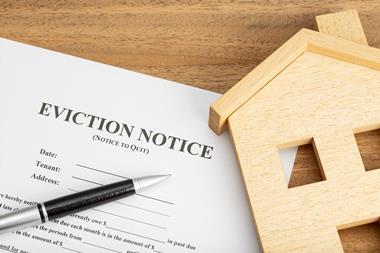Housing has rapidly risen up the UK’s political agenda in the past five years and will undoubtedly continue to do so in the run-up to the general election in May.
Our analysis shows that the total value of UK housing stock is £5.75 trillion — equivalent to the combined GDP of Germany, France and Italy and up £543bn on last year.
The way in which this value and housing growth is distributed will influence future housing policy and, ultimately, the fate of different parts of the UK housing market. It will come as little surprise that the total value of housing stock in Conservative constituencies is higher than that in Labour ones, though the fact it is nearly double (at £3.3 trillion) gives an indication of the wealth divide across the country and the political spectrum.
There is a strong argument that the maintenance of a consistent housing policy is difficult when, on the one hand, £1.4 trillion or 61% of all owner-occupied housing stock is located in Conservative constituencies while, on the other, 48% of the value of social housing is in parliamentary seats held by Labour. Both parties will have interests in the private rented sector, where both the amount and value of stock in the sector continues to rise because of a lack of accessibility to both of the other two other forms of tenure.
In what is anticipated to be a close election, all the parties will need to engage with stakeholders across all sectors of the housing market.
£1.62 trillion of housing stock is located in seats where the majority was less than 10% of the vote at the last election and the value profile in these areas almost exactly replicates that of the UK as a whole.
The pressure to have joined-up policy towards housing delivery is particularly evident in London, where the total value of housing stock is split relatively evenly between the two main parties. Here the value rose by 20%, or £247bn in 2014 alone, and is up 61%, or £563bn, on five years ago. The resulting affordability pressures are likely to come into focus during the next parliament, whoever holds the balance of power.
So the rapid growth of the private rented sector, the falling numbers in mortgaged owner-occupation, the restricted amount of new social housing being delivered and the value gap between London and the rest of the country are surely exercising policymakers in all parties. The aim must therefore be to achieve a more co-ordinated, less-polarised and longer-term set of housing policies. There is cross-party consensus that far more housing needs to be delivered, even if there is the predictable disagreement as to why this is the case and what needs to be done to achieve it.
It seems inevitable that the political parties’ positions on housing will be defined by the balance they seek to strike between stick and carrot, taxation and incentivisation, regulation and market-led solutions.
Expect housing to be high on the agenda at the Savills-sponsored LandAid Debate at City Hall on 5 February.
Let’s hope political rhetoric does not cloud the underlying need to deliver much more housing across the range of tenures — particularly in the private rented sector.
Lucian Cook is director of residential research at Savills





























No comments yet